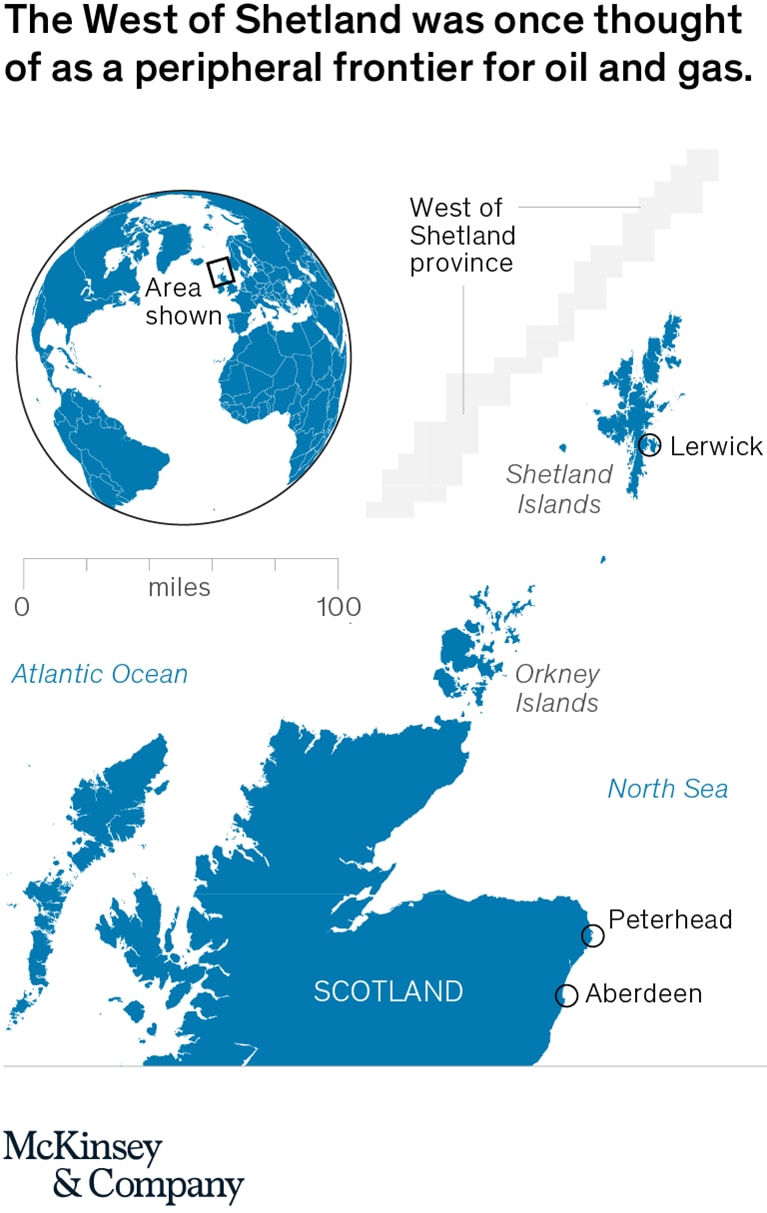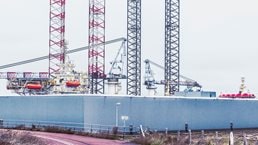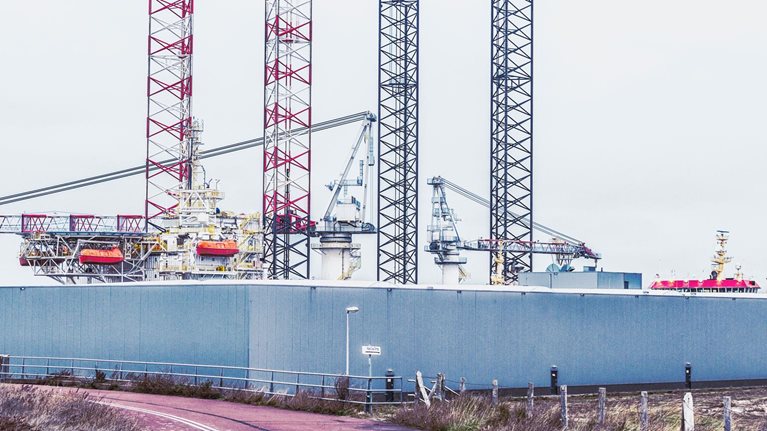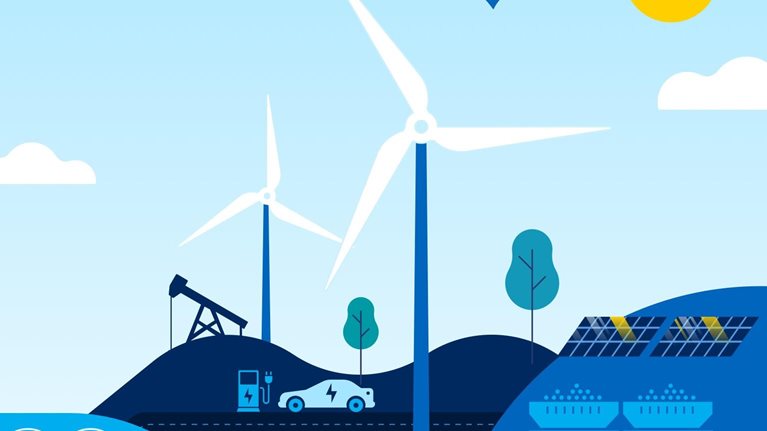Once a peripheral frontier area, the West of Shetland (WoS) province is increasingly expected to dominate offshore oil and gas activity on the UK continental shelf. While it is important for both industry and country to maximize economic recovery, developing the province presents unique challenges. However, the interplay of key levers—such as strategic regional hubs; modular, reusable concepts; agile project delivery; and digitally powered operational excellence—could push breakevens below $35 a barrel. This, in turn, could allow the province to compete favorably with the rest of the world for investment dollars.

Coming of age
Exploration in the West of Shetland began back in the 1970s, but only recently has it become the center of exploration and development on the UK Continental Shelf (UKCS). By 2025, the WoS is expected to contribute around 30 percent of UKCS production, up sharply from 2 percent at the start of the last oil-price crash, in 2014.1
Estimates could increase further if breakeven levels fall, which would bring into production some of the province’s unsanctioned reserves—three billion barrels of oil equivalent.
Increasing commitment
Fresh output would come from new discoveries. Independents and majors alike are increasingly committed to exploring and appraising the WoS, as the extensive awards of licenses in the 30th offshore-licensing round show.
The share of UKCS capital expenditure in the province will rise alongside production: forecasts suggest that by 2025, 60 percent of UKCS capital expenditures for development will be spent in the WoS, up from just 20 percent in 2018.2 This growth in spending will be crucial for both exploration-and-production (E&P) and oilfield-services-and-equipment (OFSE) companies focused on the UKCS.
National asset
The WoS is not only an asset to the industry but also has strategic importance for the UK economy. As production from legacy North Sea fields declines sharply, the WoS will play a vital role in sustaining regional economic development and energy security. Forecast spending levels and the Oil & Gas Authority’s estimates (17 jobs a year for each £1 million of expenditure) suggest that around a quarter of all upstream production and operations jobs in the UKCS (approximately 67,000) may be centered on the WoS by 2025. Both industry and country have clear incentives to unlock production from currently uneconomical reserves and to maximize economic value from the WoS.
Key obstacles to unlocking value in the WoS
Remoteness, greater water depth, a lack of established infrastructure, and a complex and less familiar geology all make unlocking production a greater challenge in the WoS than it is in the rest of the UKCS.
Frontier deepwater province
The WoS is far from key oil hubs, such as Aberdeen and Stavanger, and has the deepest water on the UKCS, at up to 1,100 meters. Since it has only a few large developments, its infrastructure is less mature, and it offers fewer options for exploration and for tie-ins to smaller finds.
As new fields ramp up, constraints on existing capacity will emerge. Although Sullom Voe can absorb near-term production growth, additional projects from continued exploration could put pressure on the terminal over the next five years—assuming no expansions, Sullom Voe’s capacity will be insufficient in 2026 if the projected throughput levels increase by 30 percent or more.3 The same holds true for gas infrastructure: new export developments must either tie into existing pipeline systems with limited capacity or construct new ones.
The remoteness and deep water of the WoS also require more complex development concepts, such as the use of extensive seabed infrastructure in Schiehallion and Laggan Tormore. Technological advances make this possible.
Technical complexity
The WoS is the least familiar of the UK areas and, from what is known, has a complex geology, including fractured basement reservoirs. These make up a large share of the discovered plays (for example, Lancaster) and could pose a high level of geological risk for operators. Other plays in the province, such as Cambo or Rosebank, involve a large amount of deepwater drilling, which is inherently more complex than drilling in shallower waters.
Would you like to learn more about our Oil & Gas Practice?
These technical challenges also appear to be manifesting themselves in poor operating efficiency: WoS fields are currently at 69 percent efficiency, according to the UK’s Oil and Gas Authority—well below that of legacy North Sea assets. It remains to be seen if the province’s complexity will prevent operators from improving production efficiency to match that of the best performers in the North Sea.
Attracting capital
Overall, the area’s deepwater, frontier, and technically complex characteristics continue to make the development and operational costs high, with a breakeven point of around $55 a barrel.4 Consequently, only two WoS deepwater discoveries under 100 million barrels of oil equivalent (MMBOE) have been sanctioned so far: Alligin and Edradour-Glenlivet, which are tiebacks to existing infrastructure.
For new hubs to be competitive in this era of sustained lower oil prices, breakevens must fall to around $35 a barrel,5 so that the province can compete for investment with other deepwater areas around the world.
How can operators reduce breakevens below $35 a barrel?
Getting costs down to $35 a barrel will require a combination of strategic regional hubs with reusable, modular development concepts; agile project delivery; digitally powered operational excellence; and innovative alliances. All four levers are necessary to unlock currently uneconomic reserves and to speed up the pace of growth (Exhibit).

Basin masters build strategic regional hubs
Today, the WoS consists of a handful of sizable discoveries of over half a billion barrels, dispersed over wide areas and owned by a range of E&P players. This fragmentation of ownership of material assets, along with the province’s other characteristics, creates infrastructure-development challenges.
So far, many operators have adopted an asset-by-asset approach to development. Yet the economics would be improved by strategic regional hubs, which would therefore promote greater activity around them (regardless of ownership) and support a more optimal WoS infrastructure buildup. These hubs are attractive opportunities for early entrants—or basin masters—since they extract a significant proportion of the area’s lifetime value through near-field exploration, production, and third-party tariff revenues. What’s more, this emerging infrastructure base would lower the breakeven cost of future developments as cheaper concepts (such as tie-backs) become viable.
Such basin masters have thrived in other regions, including the US Gulf of Mexico6 and the Norwegian North Sea. Equinor’s up-front infrastructure investment in Norway’s Asgard play, for example, opened the area to further E&P activity. Following Asgard’s start-up, in 2000, seven discoveries were made around it. Five, now operated by Equinor, cover 90 percent of recoverable reserves in the area. There is no reason similar strategic regional-hub plays (as opposed to single, field-specific solutions) should not be more pervasive in the WoS.
Modularity and agile project delivery accelerate development
Typical capital-project improvement levers—lean drilling and execution, for example, or risk-based contracting—are still paramount. Agile project-delivery methods and modular, reusable development concepts are also challenging well-established beliefs about the capital required for development projects and cycle times between discovery and first oil.
E&P players are using these methods to shave off 20 to 30 percent of their original project-development schedules. The marginal-field specialist Oranje-Nassau Energie, for example, accelerated time from discovery to first gas at its P11-11 field (in the southern North Sea) to 28 months by employing a reusable, standardized topside design and modular jackets. A Norwegian operator and an offshore oilfield services company reduced the breakeven cost of a wellhead platform by 30 percent through the use of a modular development concept that allowed construction to start in parallel with detailed engineering design.
For agile delivery methods, successful projects are staffed by a full-time, cross-functional team empowered to make rapid decisions either alone or through a readily accessible decision-making executive. Projects also tend to have a single end-to-end product owner, and a well-defined road map for decisions includes clear minimum viable products for each of them. One operator that combined agile delivery with the reuse of a catalog design solution was able to cut—to two years, from 6.5—the time from concept select phase to first oil.
Relatively few projects in the WoS have exploited modular, reusable development concepts. One of them—redeployable, circular floating production storage and offloading (FPSO)—may be particularly attractive in helping to lower breakeven costs for smaller stranded pools (under 100 MMBOE) that cannot be easily tied back to existing developments.

How the oil and gas industry can improve capital-project performance
Digitization improves precision and productivity
Digitization is a ubiquitous buzzword7 in E&P executive conference rooms. Is it really having an impact on upstream operations? There is no dearth of experimentation with digital levers. E&P players are beginning to target significant production-efficiency and cost improvements. Tools and techniques such as advanced analytics, autonomous operations, machine learning, and predictive maintenance are becoming more and more prevalent on offshore assets. Operators can therefore order the requisite materials (and schedule and execute work) on a just-in-time basis.
Operational and production-efficiency improvements can be substantial: for example, one UKCS operator cut downtime for low-pressure gas-compression systems in half by using advanced analytics to predict failures before they occurred. Another operator, which uses live data streams to optimize its system in real time, succeeded in raising production quickly. The increased use of digital twins (virtual representations of physical assets) is also helping to improve operating efficiency. One player, for example, uses a platform’s digital twin to optimize the frequency of site visits as part of its corrosion-under-insulation strategy.
Disruptive ideas are continually emerging and being tested in upstream operating environments. Innovative tools for end-to-end digital procurement and basin-wide network effects across the supply chain, for example, can compress maintenance cycle times, reduce “gray stock” inventory, and streamline prequalification and procurement processes. Cost reductions of nearly 40 percent are possible.
Many of these digital tools and techniques, which would help to ease the province’s harsh environment and technical complexity, are ripe for use in the WoS. To make the most of them, and to change how people work and operate assets in a fundamental way, E&P companies must address three elements: tying digital solutions to users’ needs and business objectives; continually improving data flows from sources to users; and gearing capabilities, processes, and systems to the routine use of digital solutions.
If, say, there is a six-week break-in rule for integrated-activity plans, make deviations easier, so offshore teams can respond in time to alarms from predictive failure-detection models. If there are well-defined roles in HR systems, adapt the definitions of skills to include digital “translators” or digitally capable discipline engineers. If legacy systems slow down data flows, establish a new data-governance approach that empowers engineers in the field to control the capture and quality of data. These moves, combined with the entrepreneurial cultural shift inherent in digital transformations, will help WoS operators become better stewards of their assets’ performance.
Innovative alliances produce structural advantages
Five years ago, the Wood Review identified a lack of cooperation across the UKCS as one of the reasons for suboptimal development and stranded assets. That risk persists as the WoS matures.
Partnerships to address the structural cost base are increasingly common. In 2016, Aker Solution, Det Norske, and Subsea 7 established a long-term alliance that allowed Det Norske to use technology and solutions reducing costs by 20 to 50 percent. In a different part of the region, Faroe Petroleum reached a tripartite agreement with ENI and Petrofac to share helicopter and accommodation facilities and thus cut operating costs and travel time for personnel.
Early cooperative moves in the WoS include Premier Oil’s offer to share infrastructure at its Solan field and Hurricane Energy’s openness to establishing a collaborative hub facility. We envision an increased trend of cooperation among operators, between operators and service providers, and with midstream specialists. Farther afield, in the Norwegian North Sea, operators are raising production efficiency by implementing operator-to-operator live sharing of data, and Lundin Norway and Aker BP are conducting trials of its benefits across Edvard Grieg and Ivar Aasen. The sharing of information between operators and suppliers (for example, an operator and its pump supplier) is facilitating the sharing of live data from equipment to reduce both failures and operating costs.
There are also opportunities for collaboration with midstream specialists. In the US Gulf of Mexico, Anadarko secured an up-front capital infrastructure investment from Enterprise Products Partners, which fully owns the export pipeline. This approach reduced Anadarko’s up-front costs and allowed the operator to focus on its core E&P expertise. Midstream collaborations could help WoS operators to reduce the financial burden of setting up regional hubs.
The WoS stands at a critical point in its history: further discoveries and sanction decisions are expected in the near term. The UKCS E&P industry must proactively unlock production in the WoS through the practices described in this article and deliver globally competitive breakeven points for new hubs. In an era of sustained lower oil prices, the industry must do everything it can to maximize economic value from the UKCS, and the WoS should be a vital part of this effort.


